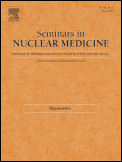
SEMINARS IN NUCLEAR MEDICINE
Scope & Guideline
Illuminating the future of radiology.
Introduction
Aims and Scopes
- Molecular Imaging Techniques:
The journal emphasizes developments in molecular imaging, particularly using PET, SPECT, and hybrid imaging technologies, which enhance diagnostic accuracy and treatment planning. - Theranostics and Radiopharmaceuticals:
A core aim is to explore the intersection of therapy and diagnostics (theranostics), focusing on radiopharmaceuticals for targeted treatment of various cancers and other diseases. - Artificial Intelligence Applications:
The integration of artificial intelligence in imaging analysis and interpretation is a significant area of interest, highlighting its potential to improve clinical outcomes and operational efficiencies. - Cardiovascular Imaging:
The journal consistently addresses advancements in cardiovascular imaging, particularly the use of PET and MRI technologies for assessing heart diseases and related conditions. - Inflammatory and Autoimmune Disorders:
A growing focus is on the application of nuclear imaging techniques in diagnosing and managing inflammatory and autoimmune disorders, showcasing the versatility of these imaging modalities.
Trending and Emerging
- Integration of AI in Imaging:
The application of artificial intelligence in nuclear medicine is rapidly gaining traction, with multiple papers exploring its role in improving imaging accuracy and efficiency, particularly in oncology. - Advancements in Prostate Cancer Imaging:
Prostate cancer imaging, especially using PSMA PET/CT, has seen increased focus, reflecting the clinical importance of precise staging and treatment response assessment in this prevalent malignancy. - Hybrid Imaging Technologies:
The trend towards hybrid imaging modalities, such as PET/MRI, is emerging as a significant focus, showcasing the advantages of combining different imaging techniques for comprehensive diagnostic evaluations. - Molecular Imaging in Inflammatory Diseases:
There is a rising interest in the use of molecular imaging techniques to diagnose and monitor inflammatory and autoimmune diseases, reflecting the expanding role of nuclear medicine beyond oncology. - Theranostics in Cancer Treatment:
The concept of theranostics is increasingly prominent, with a surge in research discussing the use of targeted radiopharmaceuticals for personalized treatment approaches in various cancers.
Declining or Waning
- Traditional SPECT Applications:
The prevalence of papers focused on traditional SPECT imaging applications has decreased, potentially due to the rise of advanced PET technologies and hybrid imaging techniques that offer improved diagnostic capabilities. - Non-Oncological Applications in Nuclear Medicine:
Research addressing non-oncological applications, such as routine diagnostic imaging for benign conditions, appears to be waning, indicating a shift towards more specialized and complex cases. - General Reviews of Nuclear Medicine:
There has been a noticeable reduction in general review articles that cover broad topics in nuclear medicine, suggesting a move towards more specialized, in-depth studies and systematic reviews.
Similar Journals

ANNALS OF NUCLEAR MEDICINE
Exploring Breakthroughs in Radiopharmaceutical ResearchANNALS OF NUCLEAR MEDICINE is a prominent academic journal dedicated to the field of nuclear medicine, published by Springer. With a rich publication history dating back to 1987 and continuing through 2024, this journal serves as a vital resource for researchers and practitioners interested in the latest developments in nuclear imaging, radiopharmaceuticals, and therapeutic applications. Ranked in the second quartile (Q2) for both Medicine (miscellaneous) and Radiology, Nuclear Medicine, and Imaging categories in 2023, it maintains a strong position in the academic community, with an impressive Scopus rank of #104 out of 333 in its field, placing it in the 68th percentile. The journal is not open access but offers a range of access options through institutional or individual subscriptions, ensuring that critical research findings reach a wide audience. By fostering high-quality, peer-reviewed articles, ANNALS OF NUCLEAR MEDICINE plays a crucial role in advancing the understanding and practical application of nuclear medicine techniques, making it an essential journal for professionals and students aiming to stay at the forefront of this evolving discipline.
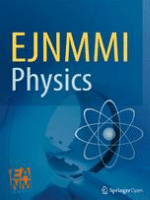
EJNMMI Physics
Pioneering Research in Radiology and Nuclear Medicine.EJNMMI Physics, the premier journal for advancements in nuclear medicine and imaging, is published by Springer in Switzerland and has been an open-access outlet since 2014, allowing for broad dissemination of critical research findings. With an ISSN of 2197-7364, the journal aims to bridge the gap between state-of-the-art physics and practical applications in biomedical engineering and radiology. Its impressive Q1 ranking in multiple categories, including Biomedical Engineering, Instrumentation, Radiation, and Radiology, Nuclear Medicine and Imaging, exemplifies its significant impact in the field. The journal boasts exceptional metrics with Scopus rankings placing it in the top echelons across disciplines, including a 6th position out of 58 in Radiation, and serves as an essential resource for researchers, professionals, and students who are eager to contribute to and stay informed about cutting-edge scientific advancements. With a broadening scope until 2024, EJNMMI Physics is an indispensable tool for those dedicated to pushing the boundaries of knowledge in medical physics and imaging technologies.

Molecular Imaging
Exploring New Dimensions in Molecular Medicine.Molecular Imaging is a prominent journal published by SAGE Publications Inc., which serves as a vital platform for the dissemination of high-quality research in the field of molecular imaging. With an E-ISSN of 1536-0121, this journal has established itself within several key areas, including Biomedical Engineering, Biotechnology, Condensed Matter Physics, Molecular Medicine, and Radiology, Nuclear Medicine and Imaging. Spanning from 2002 to 2024 and currently classified within the prestigious Q2 and Q3 quartiles, Molecular Imaging aims to highlight the latest developments and innovative methodologies in molecular imaging techniques and applications. Researchers from diverse backgrounds will find the journal's content valuable for staying updated with recent advancements, evidenced by its competitive Scopus ranking and a commitment to fostering interdisciplinary collaboration. Although the journal is not open access, the rigorous peer-review process ensures that all published articles provide significant contributions to the field, making it an essential resource for professionals, researchers, and students alike.

Nuclear Medicine and Molecular Imaging
Innovative Insights for Tomorrow's DiagnosticsNuclear Medicine and Molecular Imaging, published by SPRINGER HEIDELBERG, stands as a pivotal platform in the interdisciplinary field of radiology and nuclear medicine, focusing on innovative research and developments from 2010 to 2024. With its ISSN 1869-3474 and E-ISSN 1869-3482, this journal aims to disseminate advanced studies that explore the diagnostic and therapeutic applications of nuclear medicine technologies. Operating from Germany, it has positioned itself in the Q3 category within the Radiology, Nuclear Medicine and Imaging sector, showcasing its relevance among peer journals, with a Scopus rank of #204 out of 333. This journal not only serves as an essential resource for researchers and practitioners eager to stay abreast of modern methodologies and findings but also underscores the crucial advancements in molecular imaging techniques. Although currently not an open-access journal, it doesn't detract from its mission to promote knowledge exchange among academia and the medical community, thus paving the way for innovative solutions and improved patient care in nuclear medicine.
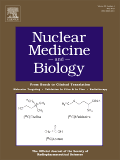
NUCLEAR MEDICINE AND BIOLOGY
Advancing the frontiers of nuclear medicine and biology.NUCLEAR MEDICINE AND BIOLOGY, published by Elsevier Science Inc, is a premier journal dedicated to advancing the fields of nuclear medicine and molecular biology. Since its inception in 1986, this journal has served as a vital platform for the dissemination of high-quality research, with a clear focus on the innovative applications of nuclear techniques in biological settings. It is categorized in the Q3 tier for both Cancer Research and Molecular Medicine, and Q2 for Radiology, Nuclear Medicine and Imaging, highlighting its significant standing within these disciplines. The journal's Scopus rankings reflect its strong impact, placing it in the top quartile of its categories, particularly in Radiology, Nuclear Medicine, and Imaging. Researchers, professionals, and students alike will find this an invaluable resource for contemporary research findings and methodologies in nuclear medicine and its biological applications. Access to the journal is provided through subscription, ensuring that quality content remains available to its wide-ranging audience.
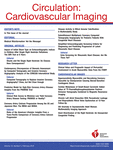
Circulation-Cardiovascular Imaging
Exploring the intersection of cardiology and innovative imaging.Circulation-Cardiovascular Imaging is a prestigious journal published by LIPPINCOTT WILLIAMS & WILKINS, dedicated to advancing the field of cardiovascular imaging through high-quality research and review articles. With an impact factor placing it in the Q1 category across key areas including Cardiology and Cardiovascular Medicine, Medicine (miscellaneous), and Radiology, Nuclear Medicine and Imaging, this journal fosters scholarly communication among leading experts and emerging researchers. Established in 2008, it has rapidly become an essential resource for academics and professionals, given its commitment to disseminating groundbreaking findings and methodologies that influence clinical practices and patient outcomes. Circulation-Cardiovascular Imaging is designed to engage a wide audience, from seasoned practitioners to students keen on exploring the nexus of cardiology and innovative imaging techniques. Its significant visibility in the medical literature underscores its role as a cornerstone in the evolution of cardiovascular diagnostics and patient care.
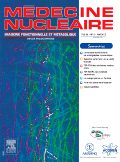
Medecine Nucleaire-Imagerie Fonctionnelle et Metabolique
Harnessing Insights in Radiological Technology.Medicine Nucleaire-Imagerie Fonctionnelle et Metabolique is a prominent journal published by Elsevier France-Editions Scientifiques Medicales Elsevier, dedicated to the specialized fields of nuclear medicine and functional imaging. With an ISSN of 0928-1258 and an E-ISSN of 1878-6820, this esteemed publication has been a crucial platform for the dissemination of research and developments in the discipline since its inception in 1993. Covering a wide array of topics within biophysics, radiological and ultrasound technology, and radiology, the journal currently holds a Q4 category ranking in these fields, reflecting its significance within the academic community. Although there are currently no open access options available for readers, the journal caters to a niche audience of researchers, professionals, and students who seek to enhance their understanding of metabolic imaging and its applications. The 2023 Scopus ranks indicate its position as an emerging source of knowledge in a competitive landscape, making it an important resource for the latest studies and innovations in nuclear medicine.
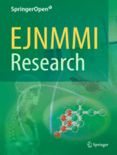
EJNMMI Research
Fostering Global Collaboration for Scientific Discovery.EJNMMI Research, a prominent journal published by Springer, plays a pivotal role in advancing the fields of radiology, nuclear medicine, and imaging. With an impact factor that reflects its strong standing—ranking in the top 22% of its category (Q1 as of 2023)—this open-access journal offers researchers, professionals, and students unparalleled access to innovative research and developments in the field since its inception in 2011. Based in Germany, EJNMMI Research fosters global collaboration by ensuring that cutting-edge findings are freely accessible, thereby accelerating scientific discovery and application. With an emphasis on high-quality, peer-reviewed articles, it serves as an essential resource for those seeking to stay at the forefront of nuclear medicine and imaging. By bridging theoretical insights with practical applications, the journal not only influences academic discourse but also supports ongoing advancements in clinical practices.
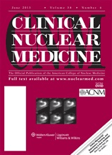
CLINICAL NUCLEAR MEDICINE
Navigating the Evolving Landscape of Nuclear MedicineCLINICAL NUCLEAR MEDICINE is a premier journal dedicated to the field of nuclear medicine, published by Lippincott Williams & Wilkins. With a history of excellence since its inception in 1978, the journal serves as a vital resource for researchers, healthcare professionals, and students seeking to deepen their understanding of this rapidly evolving discipline. The journal holds a commendable Q2 ranking in both Medicine (miscellaneous) and Radiology, Nuclear Medicine and Imaging, reflecting its significant impact on advancing clinical practices and research. While currently not offered as an open-access publication, CLINICAL NUCLEAR MEDICINE ensures rigorous peer review and high-quality publications, contributing to the broad dissemination of cutting-edge studies and reviews. With its comprehensive scope encompassing both diagnostic and therapeutic nuclear medicine applications, researchers around the globe turn to this journal to stay informed and inspire innovations in patient care for the years leading up to 2024 and beyond.
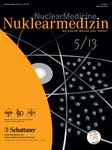
NUKLEARMEDIZIN-NUCLEAR MEDICINE
Exploring the Depths of Nuclear Medicine Research.NUKLEARMEDIZIN-NUCLEAR MEDICINE is a prestigious journal published by Georg Thieme Verlag KG, focusing on pivotal advancements in the fields of Nuclear Medicine, Radiology, and Imaging. Established in 1959, this journal has served as a critical platform for disseminating innovative research, reviews, and clinical guidelines until its anticipated convergence in 2024. With an ISSN of 0029-5566 and an E-ISSN of 2567-6407, NUKLEARMEDIZIN is acknowledged in the academic community as a Q3 category journal within Medicine (miscellaneous) and Radiology, Nuclear Medicine, and Imaging as of 2023, highlighting its ongoing contribution to the interdisciplinary dialogue in healthcare. Although the journal does not currently offer open access, it remains accessible to professionals and students through various academic databases, ensuring that cutting-edge knowledge in this growing field is shared widely. Researchers interested in the latest methods and technologies in Nuclear Medicine will find NUKLEARMEDIZIN a valuable resource for enhancing their work and understanding the complexities of modern imaging modalities.